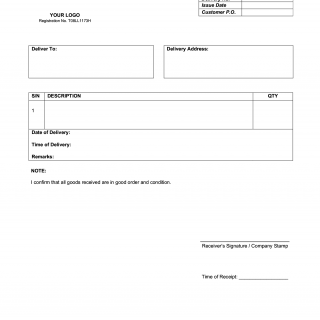Delivery Order
A delivery order is a document that instructs a carrier or logistics provider to deliver goods to a specific location. The main purpose of this form is to provide clear instructions for the delivery of goods and to ensure that the recipient receives the correct items in a timely manner.
The form usually consists of several parts, including the names and contact information of the sender and recipient, the delivery address, a detailed description of the goods being delivered, the quantity of goods, and any special instructions for the carrier. It may also include a tracking number and a signature line for the recipient to confirm receipt of the goods.
The important fields to consider when writing a delivery order include the date of delivery, the name and address of the sender and recipient, the description of goods being delivered, and any special instructions for the carrier. It is important to ensure that all information is accurate and complete to avoid any delays or errors in delivery.
The parties involved in a delivery order are the sender, the carrier or logistics provider, and the recipient. The sender is responsible for providing accurate and complete information about the goods being delivered and the recipient's contact information. The carrier is responsible for transporting the goods to the delivery address, and the recipient is responsible for accepting and confirming receipt of the goods.
When writing a delivery order, it may be necessary to attach additional documents such as an invoice or packing list to ensure that the correct goods are delivered. Application examples of delivery orders include online shopping orders, business-to-business transactions, and international trade.
Strengths of a delivery order include clear instructions for the delivery of goods, tracking information, and a record of delivery. Weaknesses may include the possibility of errors or delays in delivery. Opportunities may include the ability to track goods in real-time and improve logistics operations. Threats may include theft or damage to goods during transit.
Related forms to a delivery order include a bill of lading, which is a legal document that provides details about the shipment of goods, and a purchase order, which is a document used to request goods or services from a supplier. The main difference between these forms is that a delivery order is used to instruct a carrier to deliver goods, while a bill of lading is used to document the shipment of goods.
The future of the participants may be affected by a delivery order in terms of timely delivery of goods, customer satisfaction, and efficient logistics operations. The delivery order is usually submitted to the carrier or logistics provider, and it may be stored electronically or in paper format for record-keeping purposes.

